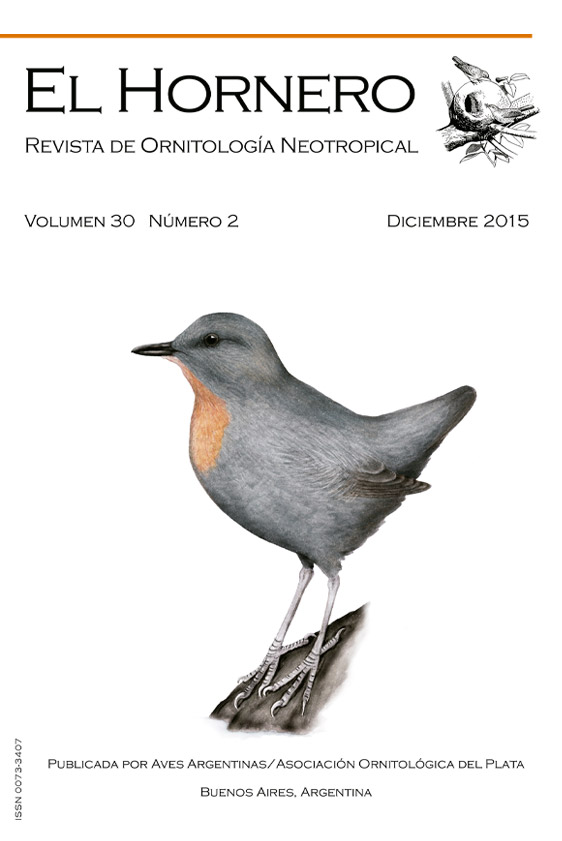Resumen
Las estrategias de muda de los zorzales se conocen principalmente para las especies del Hemisferio Norte, mientras que las del Neotrópico no están aún bien estudiadas. En este trabajo se describe la estrategia de muda y su relación con la reproducción y la migración en tres especies de zorzales neotropicales que habitan el norte de Argentina, uno de ellos residente (Turdus rufiventris) y los otros migratorios (Turdus amaurochalinus y Turdus nigriceps). Las tres especies presentaron una única muda anual, que ocurre después de la temporada de cría, sin superposición entre la muda y la reproducción. Turdus amaurochalinus comenzó su muda inmediatamente después de criar y la continuó durante su migración. No se observaron adultos en muda de Turdus nigriceps en los sitios de cría, por lo que la muda parece llevarse a cabo en las zonas de invernada. La muda en Turdus rufiventris puede extenderse a lo largo del año. En las tres especies la muda preformativa fue incompleta en los juveniles.
Referencias
CAPLLONCH P (1997) La avifauna de los bosques de tran-sición del noroeste argentino. Tesis doctoral, Universi-dad Nacional de Tucumán, San Miguel de Tucumán
CAPLLONCH P (2012) Datos de anillado del ZorzalitoBoreal (Catharus ustulatus swainsoni) en el noroestede Argentina. Nuestras Aves 57:11–13
CAPLLONCH P, ORTIZ D, SORIA K Y ZELAYA P (2008a)Migración del Zorzal común Turdus amaurochalinus.Revista Brasileira de Ornitología 16:12–22
CAPLLONCH P, SORIA K Y ORTIZ D (2008b) Comporta-miento migratorio del Zorzal cabeza negra (Turdusnigriceps nigriceps) en Argentina. OrnitologíaNeotropical 19:161–174
CAPLLONCH P Y ZELAYA P (2006) Sobre la distribucióny la migración de la Mosqueta parda (Lathrotriccuseuleri argentinus) en Sudamérica. OrnitologíaNeotropical 17:501–513

Esta obra está bajo una licencia internacional Creative Commons Atribución-NoComercial 4.0.





